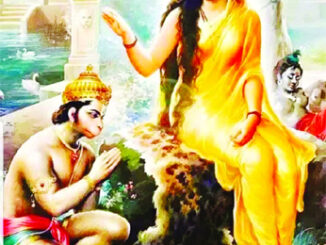
There are no big ideas in Uttar Pradesh’s pre-election discourse

It’s a pragmatic dilemma before BJP: privileging Hindutva over bread-and-butter issues or doing a balancing act.
“Given the huge investments made by PM Modi to ensure that UP does not slip from his grasp (80 Lok Sabha seats, including his own from Varanasi, are not to be trifled with), UP supposedly bolsters the party’s ‘double-engine’ story more than another state. A victory would be credited to Modi’s balance sheet; a defeat, and the buck stops on Adityanath’s door. The double-engine narrative did not work in Jharkhand, much less in West Bengal. But overfed as UP is on a diet of schemes and sops doled out in equal proportion by the Centre and the state, the Delhi dispensation is almost inseparable from Adityanath’s in popular imagination so that the BJP hoped to surmount the CM’s uneven standing (he is unpopular among large segments of Hindus) with Modi’s mass appeal. It’s really one engine which the BJP is banking upon to fuel a 2017 redux in UP.”
Bynow, a playbook template is in place before every political party in UP, fighting to keep its place under the sun. The prototype is a distillation of the clichés emerging from the pre-poll stockpile of strategies and tactics which served the players well in the past: on top of the charts are promises that balloon with every election. Promises, of which a few are realized or partially redeemed by an incumbent government, which hope that the unfulfilled promises will keep the electorate’s hopes alive. Just in case, the BJP returns to power and—eureka— every town will be blessed with metro rail connectivity and a medical college/hospital. Do people remember the numbers that perished for want of basic attention from a primary health center during the pandemic? UP’s pervasive fatalism is a blessing for its politicians; almost involuntarily memory serves as a sheath to mask the unpleasant. Instead, it’s the promise of more All India Institute of Medical Sciences clones that lights up faces. It’s a pragmatic dilemma before BJP: privileging Hindutva over bread-and-butter issues or doing a balancing act.
The BJP rolled out promises and projects like candies, although it needs to be seriously debated on how many of its mega schemes changed the quality of life of the less well-off. In 2019, CM Yogi Adityanath set up a five-member monitoring panel headed by the Chief Secretary to check on the implementation of 25 marquee projects before the elections. These included the gigantic expressways and their smaller offshoots, the defense corridor, metro rail in every city, AIIMS, a medical university named after Vajpayee (partly operational), a sports varsity and the Kashi Vishwanath temple corridor.
The litany of pledges served a major objective for the BJP. Given the huge investments made by PM Modi to ensure that UP does not slip from his grasp (80 Lok Sabha seats, including his own from Varanasi, are not to be trifled with), UP supposedly bolsters the party’s ‘double-engine’ story more than another state. A victory would be credited to Modi’s balance sheet; a defeat, and the buck stops on Adityanath’s door. The double-engine narrative did not work in Jharkhand, much less in West Bengal. But overfed as UP is on a diet of schemes and sops doled out in equal proportion by the Centre and the state, the Delhi dispensation is almost inseparable from Adityanath’s in popular imagination so that the BJP hoped to surmount the CM’s uneven standing (he is unpopular among large segments of Hindus) with Modi’s mass appeal. It’s really one engine which the BJP is banking upon to fuel a 2017 redux in UP.
The Samajwadi Party, the BJP’s most visible opponent, employs the same prototype. Promises and more promises at which it is adept. Think 2012, when the SP’s then putative CM Akhilesh Yadav created a wave on the back of an assurance to offer an unemployment dole for jobless graduates and laptops to high school-plus students. While polling was on, a record number of youths made a beeline to local government offices to claim the unemployment handout. This time, knowing there’s no engine in Delhi to power extravagant promises, Akhilesh scaled down the degree of expectations: Rs 25 lakh compensation to the families of farmers who died during the protests (a fact that the BJP is unwilling to acknowledge, let alone atone for), conducting a caste census to identify the population of each Backward Caste (an exercise fraught with uncertainty because the Yadavs, who have ruled the roost in the post-Mandal phase, might be unsettled at the prospect of sharing the pie with the more and extremely backward castes), 10 lakh jobs and free electricity up to 300 units for the poor.
Priyanka Gandhi Vadra, the Congress general secretary supervising UP, has played by the rule book while making women the pivot of her agenda. Forty per cent tickets to women, Rs 10,000 honorarium to the unsung ASHA and anganwadi workers, smartphones for ‘inter-pass’ girls and an electric scooty for women graduates. Unlike the arcane debate initiated by Rahul Gandhi over ‘Hindutva versus Hinduism’, symbolized by the persona and politics of Mahatma Gandhi and Godse, Priyanka is more rooted and has understood what the electorate wants. Didn’t the Congress of yore for decades keep UP only on the opium of sops and promises?
The tale has a twist. Switch back to 2017 and reflect on the BJP’s oration. It was predominantly about the ‘enforced’ ouster of Hindus from Muslim-dominated villages, ‘love jihad’, Romeos prowling outside girls’ schools and colleges to ensnare young women, a ban on animal slaughter and the Ram temple. Each one of these items on the Hindutva playlist was conceived to alienate the minorities and pursued vigorously. These issues stood out in relief on a larger canvas on which quotidian matters relating to welfare and well-being were relegated to the background. It’s a pragmatic dilemma before the BJP: privileging Hindutva over bread-and-butter issues or doing a balancing act. Modi’s inauguration of the Kashi corridor was as much of a spectacle, if not more ostentatious, than the launch of the Purvanchal Expressway, both in east UP. Hindutva is the sheet anchor of the BJP’s politics. While its opponents have lately been compelled to acknowledge, and even co-opt a more benign version of Hindutva in their political programs, they can calibrate its use without sounding belligerent. Not the BJP. For the party, being pious means sounding bellicose and communal. Aurangzeb-Salar Masud versus Shivaji and Suheldev. There’s a wispy quality to the BJP’s promises on welfare and infrastructure, as though its heart is not really in giving the subsidized rations and paving the highways. Does this mean that the pledges the SP and the Congress make may carry more conviction? Not necessarily. It’s a template they have universally adopted. It’s about jumping on the bandwagon. Over to the voters.
(The author is a senior journalist)





Be the first to comment